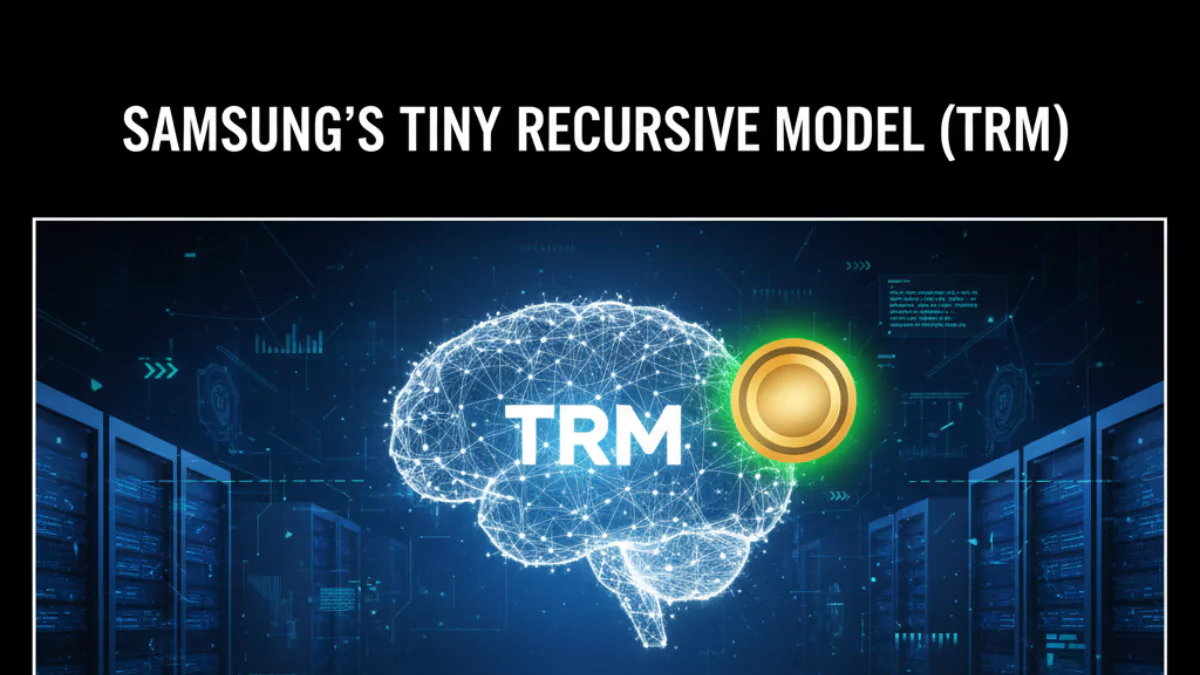Samsung researchers introduced a small yet strong AI system that hits big scores on tough reasoning benchmarks. The Tiny Recursive Model, or TRM, shows that smart design can beat size.
Key highlights
- 7 million parameter TRM scores 45% on ARC-AGI-1 and 8% on ARC-AGI-2
- Outperforms larger models from DeepSeek, Google, and OpenAI on these benchmarks
- Trained from scratch with only 1,000 samples
- Recursive design improves answers in steps
- About 75% smaller than the Hierarchical Reasoning Model
- Samsung published the code and the paper
- Strong potential for efficient AI on edge devices
TRM at a glance
| Detail | Value |
|---|---|
| Parameters | 7 million |
| ARC-AGI-1 | 45% |
| ARC-AGI-2 | 8% |
| Training data | 1,000 samples, trained from scratch |
| Size vs HRM | About 75% smaller |
| Availability | Code and paper are public |
What Samsung released
Samsung’s research team released the Tiny Recursive Model, a compact neural network built for reasoning. Despite its small size, TRM tops scores from bigger models by DeepSeek, Google, and OpenAI on ARC-AGI benchmarks.
How TRM performs
TRM posts 45% on ARC-AGI-1 and 8% on ARC-AGI-2. These scores mark a notable jump for a model of this scale and show that careful training and design can match or beat brute force size.
How the model works
TRM uses a recursive design. It loops over its own answers and refines them step by step. This approach cuts the total size by about 75% compared with prior work like the Hierarchical Reasoning Model, while still lifting accuracy.
Why it matters for edge devices
Smaller, smarter models can bring better reasoning to edge devices with tight power and memory limits. TRM points to a path where teams can ship useful AI without huge compute bills.
What is available now
Samsung released the code and the research paper so developers and researchers can test, build, and compare results.
Bottom line
TRM shows that small models can punch above their weight. With strong scores on ARC-AGI, tiny training data needs, and an open release, Samsung’s approach could shape the next wave of efficient AI.


